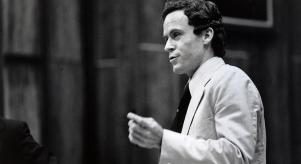
Was Van Gogh Murdered?
The death of Vincent Van Gogh is a key element of his legend. Van Gogh, the ultimate poster child for tortured artists everywhere, the classic “misunderstood genius” who channelled his turmoil into blazingly intense masterpieces but was ultimately driven by his personal demons to kill himself aged just 37. His suicide represents a kind of self-martyrdom, a tragic confirmation of what a doomed outsider he really was.
But what if it wasn’t a suicide at all? What if the great post-Impressionist painter was the victim, not of his own depression, but of a mystery assailant?
First, let’s consider the conventionally accepted sequence of events. On the morning of 27 July 1890, Vincent Van Gogh left the rural inn where he was lodging, just outside Paris. He went to a wheat field close to the inn, presumably to paint. Unusually for him, he stayed out all day and only returned after nightfall, in clear discomfort. Moments later, the innkeeper realised the artist had been shot. Van Gogh bluntly stated: “I have tried to kill myself.”
It seemed that Van Gogh had shot himself in the chest at some point during the day, passed out, and then re-awoken to stagger back to the inn. Death would come slowly, with the artist only succumbing to his injuries days later. He was even questioned by local officials on what exactly had happened to him, and replied: “My body is mine and I am free to do what I want with it. Do not accuse anybody, it is I that wished to commit suicide.”
I have tried to kill myself.
His brother Theo van Gogh, who was there when Vincent died, was certainly convinced it was suicide, saying “He himself wanted to die.” The artist’s epic struggle with mental illness and depression are certainly well documented – the previous year he had even confined himself to an asylum, where he painted one of his most iconic works, The Starry Night. Letters from the time reveal how dark his mood was.
“I had contracted the other patients' disease to such an extent that I could not be cured of my own,” he wrote.
So, the motive for suicide was clearly there. Here was a man utterly beset by turmoil, seeking a way out from the swirling, unending anguish within. But look more closely at the case, and some troubling questions emerge. For example, why would Van Gogh have shot himself in the chest, rather than simply in the head? Why take the chance of a long, lingering, painful death with such a cumbersome shot? Where did he get the gun anyway? Why wasn’t the gun recovered by officials at the time? Why did he say the words “do not accuse anybody”? And why did a man so famed for his many eloquent letters to his brother not leave even a hint of a suicide note?
Eminent journalists Steven Naifeh and Gregory White Smith, authors of a landmark biography of the artist, have delved closely into Van Gogh’s final days. As well as poring through documents from the time, including interviews with locals, they also consulted forensics expert Dr Vincent Di Maio, who was an expert witness in the George Zimmerman/Trayvon Martin case.
Dr Di Maio has debunked some assertions about Van Gogh’s bullet wound. According to a witness at the scene, the wound was a brown ring with a “purple halo” around it. Some have postulated this particular wound pattern implies the gun was at very close range, but Dr Di Maio puts the purple halo down to nothing more than “subcutaneous bleeding from vessels cut by the bullet… usually seen in individuals who live awhile”, while the brown ring is a mere “abrasion ring… seen around virtually all entrance wounds.”
The forensics expert was also puzzled by the angle of the shot, saying “it would be extremely difficult to shoot oneself in this location”, and that a typical handgun of the era would have left obvious powder burns and soot all over Van Gogh if he’d pulled the trigger himself at such close range. His opinion is clear: “In all medical probability, the wound incurred by Van Gogh was not self-inflicted. In other words, he did not shoot himself.”
In all medical probability, the wound incurred by Van Gogh was not self-inflicted.
So who did? Incredibly, there is an actual named suspect in the case: Rene Secretan. He was a cocky teenager whose wealthy family would holiday in the area every summer. Obsessed with the Wild West, having seen Buffalo Bill’s famous show when it toured in France, Secretan was known to go around in full cowboy garb, and had a real, working pistol which – according to a later interview with Secretan himself – was prone to malfunctioning.
According to documents and testimonies uncovered by biographers Steven Naifeh and Gregory White Smith, Secretan and his cronies would mock and bully Van Gogh, who was regarded as a bizarre eccentric in the community. They would sprinkle hot pepper on Van Gogh’s brushes, knowing his habit of absent-mindedly sucking them when deep in thought. They poured salt in his tea, and even put a live snake in his paint box.
Van Gogh’s biographers have hypothesized that, while provoking Van Gogh with his gun during one such prank, the revolver went off – perhaps accidentally. According to this theory, Van Gogh – who welcomed the prospect of death anyway – chose to take the “blame” himself, to protect Secretan from the police.
Could it really have unfolded this way? It may just be a theory, but there is certainly enough circumstantial evidence to make any neutral onlooker re-think the facts of the case. And to even cast doubt on one of the most mythologised chapters in the history of art.




